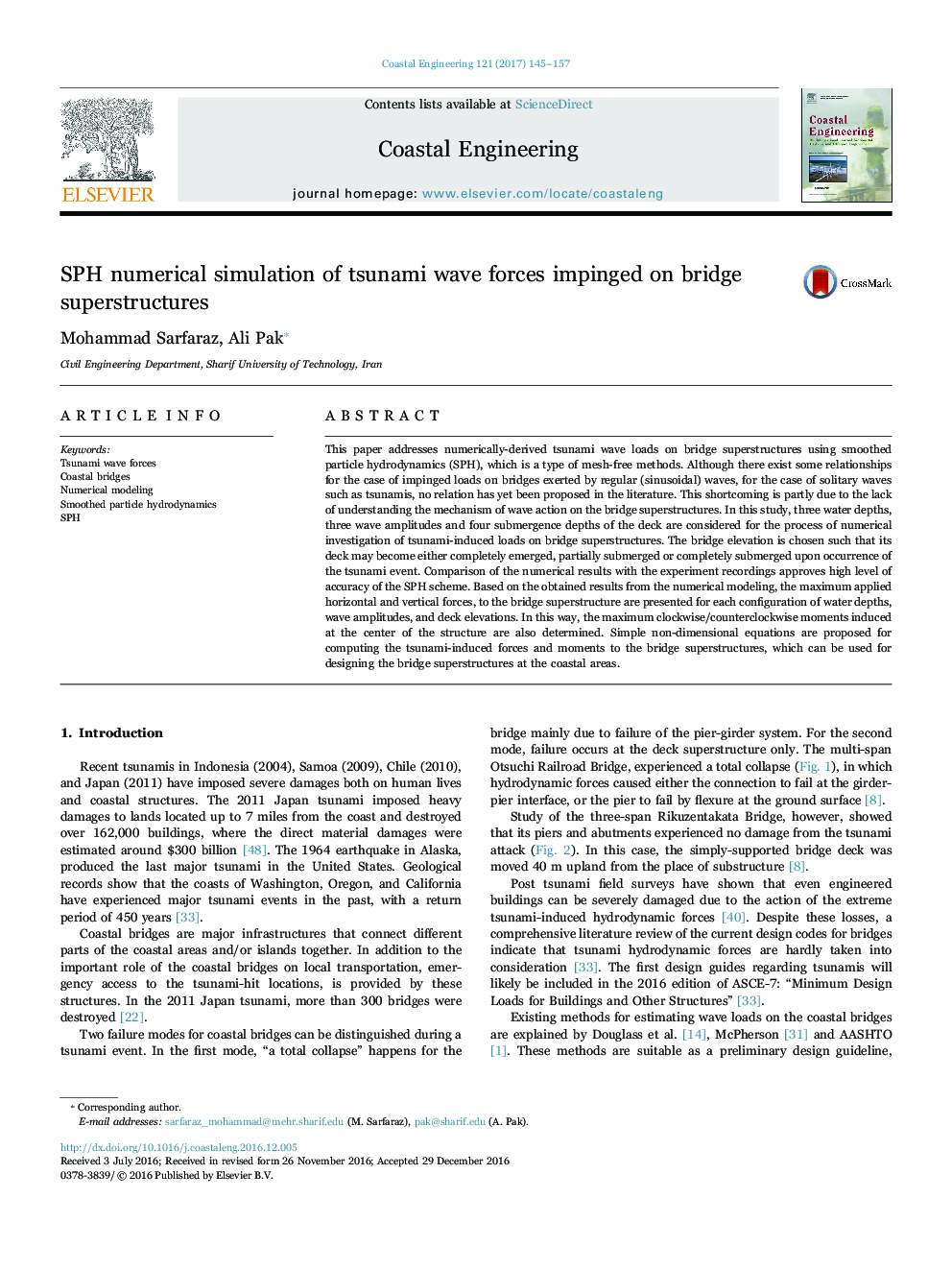| Article ID | Journal | Published Year | Pages | File Type |
|---|---|---|---|---|
| 5473391 | Coastal Engineering | 2017 | 13 Pages |
Abstract
This paper addresses numerically-derived tsunami wave loads on bridge superstructures using smoothed particle hydrodynamics (SPH), which is a type of mesh-free methods. Although there exist some relationships for the case of impinged loads on bridges exerted by regular (sinusoidal) waves, for the case of solitary waves such as tsunamis, no relation has yet been proposed in the literature. This shortcoming is partly due to the lack of understanding the mechanism of wave action on the bridge superstructures. In this study, three water depths, three wave amplitudes and four submergence depths of the deck are considered for the process of numerical investigation of tsunami-induced loads on bridge superstructures. The bridge elevation is chosen such that its deck may become either completely emerged, partially submerged or completely submerged upon occurrence of the tsunami event. Comparison of the numerical results with the experiment recordings approves high level of accuracy of the SPH scheme. Based on the obtained results from the numerical modeling, the maximum applied horizontal and vertical forces, to the bridge superstructure are presented for each configuration of water depths, wave amplitudes, and deck elevations. In this way, the maximum clockwise/counterclockwise moments induced at the center of the structure are also determined. Simple non-dimensional equations are proposed for computing the tsunami-induced forces and moments to the bridge superstructures, which can be used for designing the bridge superstructures at the coastal areas.
Related Topics
Physical Sciences and Engineering
Engineering
Ocean Engineering
Authors
Mohammad Sarfaraz, Ali Pak,
